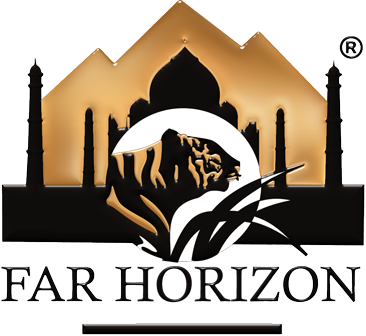Hornbill Festival & Hoollongapar Gibbon Sanctuary with MV Mahabaahu Downstream Cruise
more_vert
-
Duration15 Days
-
Region
-
Category
-
Best Time
- December
Introduction
An experiential journey to take part in the most vibrant tribal festival of Nagaland, the Hornbill Festival. Dubbed as the “Festival of Festivals” this event provides a great introduction of the rich and traditional cultural heritage of the Naga culture in all its ethnicity, diversity and grandeur. Combine this with Hollongapar Gibbon Wildlife Sanctuary, more popularly known as Gibbon Wildlife Sanctuary. The sanctuary has a rich biodiversity and is home to the only apes in India. Travel through the lesser explored parts of the beautiful Assam onboard the MV Mahabaahu cruise on the Brahmaputra River. The Brahmaputra is the only river in India to be given a male name and travels 2,900km from Tibet, through India to Bangladesh where it flows into the Bay of Bengal. This is the greatest river island system with the smallest and largest inhabited islands of the world located here. It is the only navigable river of the world under the shadows of over 7,000 meter high, towering snow-covered Himalayan mountains. This is also the only river apart from the Zambezi River in Africa from which elephant, jeep and boat safaris can take place in the Kaziranga National Park, described as the Serengeti of India though, we are not doing elephant safaris unless specifically requested.
Destinations Covered
Kolkata
The City of JoyKolkata (formerly Calcutta) is the capital of West Bengal and the second largest city in India (after Mumbai). This city is a daily festival of human existence, simultaneously noble and squalid, cultured decidedly futuristic.
History and Culture
The history of Kolkata is intimately related with its invention during the British rule dating back 300 years ago. Earlier known as Calcutta, it originated as a capital of British India in 1960 when East India Company dominated the country.
Kohima
Kohima is a beautiful city. Most of the people of Naga community live in Kohima . Apart from cultural scenes and experiences, tourists can also visit many excellent and historical tourist places here. Prominent among these are the State Museum, Emporium, Naga Heritage Complex, Kohima Village, Djukou Valley, Japfu Peak, Tseminyu, Khonoma Village, Djuleki and Tyofema Tourist Village. It is very much liked by all the tourists because its beauty mesmerises them.
Jorhat
Tea Capital of IndiaJorhat is the cultural capital of Assam; home to the largest Tea research station, there are as many as 135 tea gardens in Jorhat.
Sivasagar
Imprints of Ahom DynastySivasagar, previously spelled Sibsagar, is a city in the Sivasagar District of Assam, about 360 kilometres northeast of Guwahati. It is the headquarters of the Sivasagar district. This city is surrounded by the Dehing rainforest, where the Dihing and Lohit rivers meet.
Majuli
World's Largest Fresh Water IslandMājuli or Majoli is a river island in the Brahmaputra River, Assam and in 2016 it became the first island to be made a district in India. It had an area of 880 square kilometres (340 sq mi) at the beginning of the 20th century, but having lost significantly to erosion it covers 352 square kilometres (136 sq mi) as at 2014. Majuli has shrunk as the river surrounding it has grown. Majuli is currently listed as the world's largest river island in the Guinness Book of World Records.
Kaziranga National Park
The haven of one-horned rhinosA UNESCO World Heritage site, Kaziranga is famous as the abode of the one-horned rhinoceros. Made unique with a vibrant, well preserved and sustained ecology this park has a very versatile bio diversity which makes Kaziranga National Park a very important and popular tourist destination.
Guwahati
The Gateway to the North-EastGuwahati is the largest city in Assam and Northeast India. The slow, meandering Brahmaputra River is a focal point of the downtown while the lush hills of the Shillong Plateau provide a verdant backdrop for the suburbs.
History and Culture
There is a magical aura that still lingers over the ever-expanding city. The demon king Narkasura is said to have built this ancient city. Another reason for Guwahati's charm is its being the ancient 'Kamrup', the birthplace of Kamdeva, the God of Love.
Detailed Itinerary
- Day 1 Arrive Kolkata
- Day 2 Kolkata
- Day 3 Kolkata – Dimapur & drive to Kohima
- Day 4 Kohima
- Day 5 Kohima
- Day 6 Kohima – Jorhat
- Day 7 Half Day Excursion: Hoollongapar Gibbon Sanctuary
- Day 8 Jorhat – Neamati Ghat & Board to MV Mahabaahu Cruise
- Day 9 Sibsagar/ Home-hosted lunch with a Planter’s family at their Tea-Estate
- Day 10 Majuli Island visit/ A Bonfire Evening with Barbequed snacks and Beverages on a deserted island, a unique experience
- Day 11 Mishing Village Visit / Boat safari
- Day 12 Weaver’s village at Bishwanath Ghat/ Sail to Silghat/ Tea Estate visit and/or Jute Mill
- Day 13 Kaziranga National Park
- Day 14 A Bangla Village Visit and sail past Peacock Island
- Day 15 Fly Guwahati – Kolkata
















